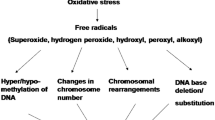Abstract
Sporelings of the monoecious red alga Gelidium vagum were placed into 4500 individual cultures after treatment with the chemical mutagen nitrosoguanidine and raised to sexual maturity to search for reproductive mutants. Isolates undergoing normal self-fertilization were discarded, leaving approximately 250 self-sterile plants and mutants with abnormal reproduction or reproductive structures. Self-sterile mutants were tested further in crosses to a fertile green marker stock. From the results, many mutants appeared to be either male-sterile, female-sterile or unable to form carposporophytes. Although sufficient data on the inheritance pattern of the self-sterile mutants are available for only a few of the isolates, some apparently stable sterility mutations with simple Mendelian transmission were identified. Preliminary testing of one of the male-sterile mutations confirmed that it effectively eliminated self-fertilization and facilitated the formation of hybrid plants in crosses.
Similar content being viewed by others
References
McLachlan, J., 1973. Growth medium-marine. In J. R. Stein (ed.), Handbook of Phycological Methods. Cambridge University Press, Lond.; 25–51.
Ohme, M., Kunifuji & A. Miura, 1986. Cross experiments of the color mutants in Porphyra yezoensis Ueda. Jap. J. Phycol. 34: 101–106.
Renfrew, D. E., 1988. Gelidiales (Rhodophyta, Red Algae) in British Columbia and Northern Washington: taxonomy, morphology, development and life history. Ph.D. Thesis, Dept. of Botany, Univ. of British Columbia, 289 pp.
Renfrew, D. E., P. W. Gabrielson & R. F. Scagel, 1989. The marine algae of British Columbia, northern Washington and southeast Alaska: division Rhodophyta (red algae), class Rhodophyceae, order Gelidiales. Can. J. Bot. 67: 3295–3314.
van der Meer, J. P., 1987. Using genetic markers in phycological research. Proc. int. Seaweed Symp. 12: 49–56.
van derMeer, J. P. & E. R. Todd, 1977. Genetics of Gracilaria sp. (Rhodophyceae, Gigartinales). IV. Mitotic recombination and its relationship to mixed phases in the life history. Can. J. Bot. 55: 2810–2817.
van der Meer, J. P., M. U. Patwary & C. J. Bird, 1984. Genetics of Gracilaria tikvahiae (Rhodophyceae). X. Studies on a bisexual clone. J. Phycol. 20: 42–46.
Author information
Authors and Affiliations
Rights and permissions
About this article
Cite this article
van der Meer, J.P. Isolation and genetic characterization of self-sterile mutants in a monoecious red alga Gelidium vagum (Gelidiales, Rhodophyta). Hydrobiologia 204, 389–395 (1990). https://doi.org/10.1007/BF00040261
Issue Date:
DOI: https://doi.org/10.1007/BF00040261




